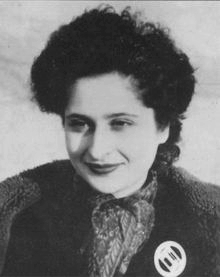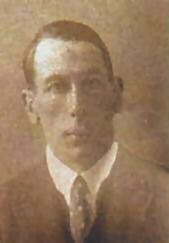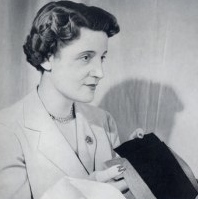Related Research Articles

Dame Ninette de Valois was an Irish-born British dancer, teacher, choreographer, and director of classical ballet. Most notably, she danced professionally with Serge Diaghilev's Ballets Russes, later establishing the Royal Ballet, one of the foremost ballet companies of the 20th century and one of the leading ballet companies in the world. She also established the Royal Ballet School and the touring company which became the Birmingham Royal Ballet. She is widely regarded as one of the most influential figures in the history of ballet and as the "godmother" of English and Irish ballet.

Hat-making or millinery is the design, manufacture and sale of hats and other headwear. A person engaged in this trade is called a milliner or hatter.

Vera Leigh was an agent of the United Kingdom's clandestine Special Operations Executive during World War II.

Delphine Claire Beltiane Seyrig was a Lebanese-born French actress and film director.

Sonia Olschanezky was a member of the French Resistance and the Special Operations Executive during World War II. Olschanezky was a member of the SOE's Juggler circuit in occupied France where she operated as a courier until she was arrested by the Gestapo and was subsequently executed at the Natzweiler-Struthof concentration camp.

Fernand de Brinon, Marquis de Brinon was a French lawyer and journalist who was one of the architects of French collaboration with the Nazis during World War II. He claimed to have had five private talks with Adolf Hitler between 1933 and 1937.

Marie-Jeanne Rose Bertin was a French milliner, known as the dressmaker to Queen Marie Antoinette. She was the first celebrated French fashion designer and is widely credited with having brought fashion and haute couture to the forefront of popular culture.

Lilian Decima, Lady Moore-Guggisberg, CBE, better known by her stage name Decima Moore, was an English singer and actress, known for her performances in soprano roles with the D'Oyly Carte Opera Company and in musical comedies. She was the youngest of ten siblings. Her sister, actress Eva Moore, was the mother of actress Jill Esmond, the first wife of Laurence Olivier.

Charles André Mare (1885–1932), or André-Charles Mare, was a French painter and textile designer, and co-founder of the Company of French Art in 1919. He was a designer of colorful textiles, and was one of the founders of the Art Deco movement.

Lise Marie Jeanette de Baissac MBE CdeG, code names Odile and Marguerite, was a Mauritian agent in the United Kingdom's clandestine Special Operations Executive (SOE) organization in France during World War II. The purpose of SOE was to conduct espionage, sabotage, and reconnaissance in countries occupied by the Axis powers, especially Nazi Germany. SOE agents allied themselves with resistance groups and supplied them with weapons and equipment parachuted in from England.
Julienne Marie Louise Aisner, code named Clair, was an agent in France of the United Kingdom's clandestine Special Operations Executive (SOE) organization during World War II. The purpose of SOE was to conduct espionage, sabotage, and reconnaissance in countries occupied by the Axis powers, especially Nazi Germany. SOE agents allied themselves with resistance groups and supplied them with weapons and equipment parachuted in from England.

Caroline Reboux was a Parisian milliner and French fashion designer. She opened her first boutique at 9 Avenue Matignon in Paris in 1865, which she continued to operate throughout her life. Reboux opened other shops in Paris and London starting in 1870. She trained other milliners who became famous in their own right, including American milliner Lilly Daché and French milliner Rose Valois. Reboux's most famous shop was located at 23 Rue de la Paix in Paris, which carried on operating after her death for almost three decades.

Simone Mirman (1912–2008) was a Paris-born milliner based in London, chiefly known for her designs for the British royal family.

John Cavanagh was an Irish couturier of the 1950s and 1960s. A member of the Incorporated Society of London Fashion Designers (IncSoc), his style has been described as reflecting Parisian chic. He designed the wedding dresses for the Duchess of Kent in 1961 and for Princess Alexandra in 1963.

Plucky Liege (1912–1937) was a British Thoroughbred racemare who produced eleven winners, including an Epsom Derby winner at the age of twenty-three and three British Classic race winners. The performances of these horses led to her becoming one of the most important broodmares of the 20th century.
Frederick Fox LVO was an Australian-born British milliner who designed hats for Queen Elizabeth II and other members of the British Royal Family.

A draped turban or turban hat is a millinery design in which fabric is draped to create headwear closely moulded to the head. Sometimes it may be stiffened or padded, although simpler versions may just comprise wound fabric that is knotted or stitched. It may include a peak, feather or other details to add height. It generally covers most or all of the hair.
Alexis Rassine was a South African ballet dancer who enjoyed his greatest success with the Sadler's Wells Ballet in England in the 1940s and early 1950s. He is remembered as a classical dancer who made "a major contribution to British ballet" during wartime and "helped to keep the flag flying when all about was chaos and disaster."

For the French general and diplomat, see Claude Carra Saint-Cyr

A lampshade hat is a millinery design in which the hat has a small circular crown – typically flat, but sometimes rounded – and flares outwards to create a cone-like profile. In shape, it may have some similarities to the pillbox and bucket hat, both of which were popular at around the same time, although the classic lampshade design is longer and more flared than a pillbox and is generally made of stiffer material than a bucket hat.
References
- 1 2 Perkins, Alice K. (1949). Paris Couturiers and Milliners. Fairchild Publications. p. 63.
- 1 2 3 Waddell, Gavin (2004). How fashion works : couture, ready-to-wear, and mass production (Online-Ausg. ed.). Oxford, UK: Blackwell Science. p. 105. ISBN 9781118814994.
- 1 2 Escott, Beryl E. (2010). Heroines of the SOE Britain's secret women in France. Stroud: History. ISBN 9780752462455.
- 1 2 Nicholas, Elizabeth (1958). Death be not proud. London: Cresset Press. pp. 86–88.
- ↑ Vaudoyer, Mary (2012). Whisper of truth. Memoirs Publishing. p. 88. ISBN 9781909304307.
- ↑ "Obituary for Fernand Cleuet". L'officiel de la mode (in French). No. 473–474. 1961. p. 466. Retrieved 29 October 2015.
- ↑ Horwell, Veronica (14 August 2008). "Obituary: Simone Mirman". The Guardian. Retrieved 18 July 2014.